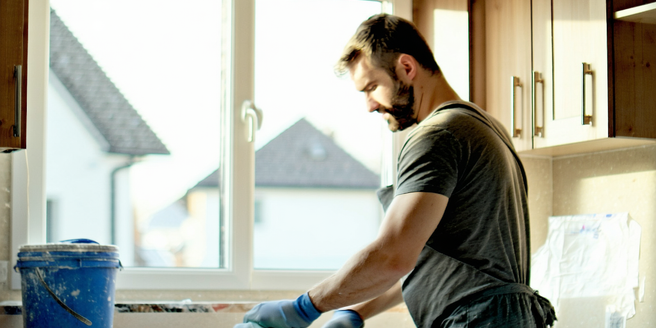Renovation Approaches To Save Money

Prioritize Essential Upgrades
When renovating, it is crucial to identify which upgrades are absolutely necessary to address structural concerns or improve safety. Start by evaluating in-depth inspections that highlight urgent areas needing attention such as outdated electrical systems, plumbing issues, or roof repairs. Prioritizing these upgrades ensures that your home remains safe and retains or even increases in value. It also allows you to focus your budget on improvements that yield the highest impact long-term. By avoiding unnecessary add-ons or aesthetic changes, you can allocate financial resources to modifications that matter most. Additionally, tackling essential upgrades first can save you from costly repairs down the road and keep renovation costs from spiraling out of control. This strategy not only assures a more secure living environment but also facilitates a more structured approach to managing home improvement expenses over time.
Opt for DIY Where Possible
Taking the DIY route for certain renovation projects can significantly lower costs and provide a sense of accomplishment. While complex tasks should be left to professionals, there are numerous straightforward projects that homeowners can efficiently handle themselves. Painting walls, tiling backsplashes, and installing basic fixtures can be done with minimal investment in tools or materials and do not require extensive expertise. However, it’s important to conduct thorough research and understand the steps involved before jumping into a DIY project. Online tutorials and DIY guides can be incredibly helpful resources. Furthermore, gradually building your skills through smaller tasks helps gain confidence and enhances creativity in home renovation projects. By strategically choosing DIY projects, homeowners can stretch their budget further and personalize their living spaces without compromising on quality or safety.
Source Materials Smartly
Acquiring materials for renovations smartly is key to saving money. Begin by comparing prices from various suppliers and consider purchasing materials during sales or clearance events. Reclaimed materials from demolition sites, second-hand stores, or salvage yards can offer cost-effective and environmentally friendly alternatives to brand-new products. Additionally, consider purchasing surplus materials from contractors or through online marketplaces where discounts can be gained. Always ensure that second-hand or discounted items are of good quality and suitable for your project requirements. Establishing a good relationship with local suppliers might also lead to better deals or discounts. Sometimes, buying in bulk can reduce costs, but only if you are certain that the extra materials will be used. Through strategic sourcing, not only can you substantially cut costs, but you can also contribute to sustainability by reducing waste.
Leverage Energy Efficiency
Integrating energy-efficient solutions during renovations not only saves money but is also environmentally friendly. Begin by conducting an energy audit to understand where improvements can be made, such as insulation upgrades, installing energy-efficient windows, or choosing Energy Star-rated appliances. These upgrades may require an initial investment but result in long-term cost reductions through decreased energy bills. Moreover, governments often offer tax incentives or rebates for implementing energy-efficient measures, adding another layer of savings. Additionally, incorporating renewable energy solutions like solar panels can greatly reduce dependency on conventional power sources, further cutting down utility costs. By making energy-efficient upgrades a core component of your renovation strategy, you foster an eco-friendly household that not only contributes to environmental conservation but also ensures substantial savings over time.
Reuse and Upcycle Materials
Reusing and upcycling materials during renovation projects can significantly reduce costs while adding unique character to your space. Start by assessing existing resources that can be repurposed. Old furniture can be given new life with a fresh coat of paint or minor repairs. Wood from deconstructed barn doors can become a stunning feature wall or unique shelving units. Diving into local markets or online platforms for vintage or slightly used items can result in substantial savings. Upcycling extends the lifecycle of materials, contributing to sustainability efforts by minimizing waste. Get creative; consider using pallets for gardening projects or turning an old ladder into a bookshelf. These efforts not only make sense economically but also invite individuality into your home decor, encouraging a creative and resource-efficient approach to renovations.
Plan for Long-Term Savings
Renovating with a focus on long-term savings involves making strategic decisions that reduce future costs and increase home value. Instead of opting for the cheapest option, consider durability and maintenance requirements when selecting materials. Quality flooring, countertops, or fixtures may require a larger initial investment, but save money on repairs or replacements over time. Implementing smart home technologies, like automated temperature control systems, can optimize energy usage and lower utility bills. It’s also valuable to consult professionals for advice on renovations that have the highest return on investment. Each decision, from materials to technology integration, should be evaluated based on its longevity and efficiency. By planning renovations with a long-term perspective in mind, you not only enhance comfort and functionality in the present but also enjoy financial benefits for years to come.